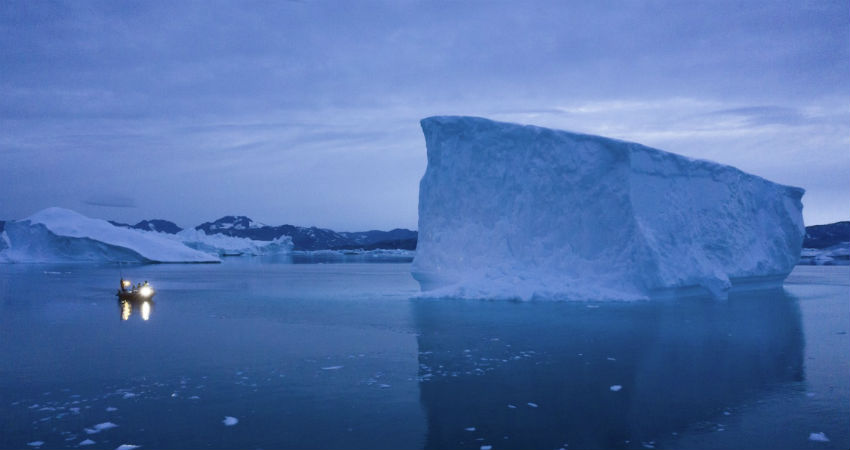
New York University's air and ocean scientist David Holland has to say that Greenland is the place where the planet’s warmer and watery future is being written. This is where Earth's refrigerator door is left open, where glaciers dwindle, and seas begin to rise.
It is so warm inside the Arctic Circle that on an August day, people leave their coats behind on the ground and colleagues work on the watery melting ice without gloves.
Summer this year is hitting Greenland hard with record-shattering heat and extreme melt. The scientists are estimating that by the end of summer, about 440 billion tons of ice or maybe more have melted off Greenland’s giant ice sheet.
In a span of five days that is from July 31 to August 3, more than 58 billion tons (53 billion metric tons) has been melted from the surface. That's over 40 billion tons more than the average for this time of year. And that 58 billion tons don't even count the huge splitting events or the warm water eating away at the glaciers from below, which may be a huge factor.
It seems like that the ice Holland which is standing is almost thousands of years old. It will be gone within a year or two, adding yet more water to rising seas worldwide.
Helheim, one of Greenland's fastest-retreating glaciers, has shrunk about 6 miles (10 kilometers) since scientists came here in 2005.
NASA’s oceanographer, Josh Willis who is also in Greenland and is studying the melting of ice from above said that this melting is due to the combination of man-made climate change and natural but weird weather patterns.
To this, he added that the glaciers here do shrink in the summer and grow in the winter, but nothing like this has happened this year.
Summit Station, a research camp nearly 2 miles high (3,200 meters) and far north, warmed to above freezing twice this year for a record total of 16.5 hours. Before this year, that station was above zero for only 6.5 hours in 2012, once in 1889 and in the Middle Ages.
The scientists also reported that the ending of the year is coming near but not quite passing the extreme summer of 2012 which was Greenland’s worst year in modern history for melting.
Ice Scientist, Tom Mote, University of Georgia said that if we look at the climate model projections, then we can expect to see larger areas of the ice sheet experiencing melt for longer durations of the year and greater mass loss going forward.
A NASA satellite found that Greenland's ice sheet lost about 255 billion metric tons of ice a year between 2003 and 2016, with the loss rate generally getting worse over that period. Nearly all of the 28 Greenland glaciers that Danish climate scientist Ruth Mottram measured are retreating, especially Helheim.
At Helheim, the ice, snow, and water seem to go on and on, sandwiched by bare dirt mountains that now show no signs of ice but get covered in the winter.
Holland, like NASA's Willis, is skeptical that warm, salty water that comes in part from the Gulf Stream in North America is playing a bigger role than previously thought in melting Greenland's ice. And if that's the case, that's probably bad news for the planet, because it means faster and more melting and higher sea-level rise.
Adding to the horror, Willis said that by the year 2100, Greenland alone could cause 3 or 4 feet (more than 1 meter) of sea-level rise.
The residents have been witnessing a change wherein the winter used to last as much as 10 months but now it is as short-lived as five months.
Image Credits – Los Angeles Times
Any information taken from here should be credited to Skymet Weather


